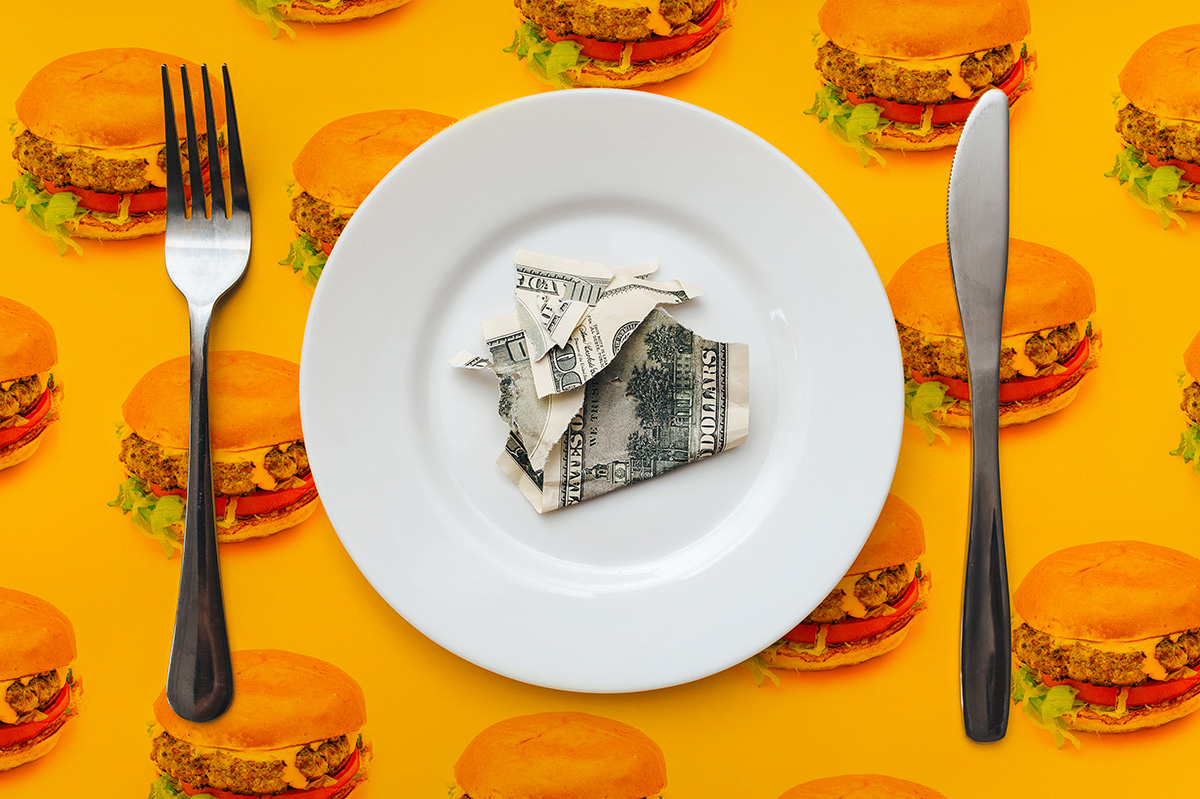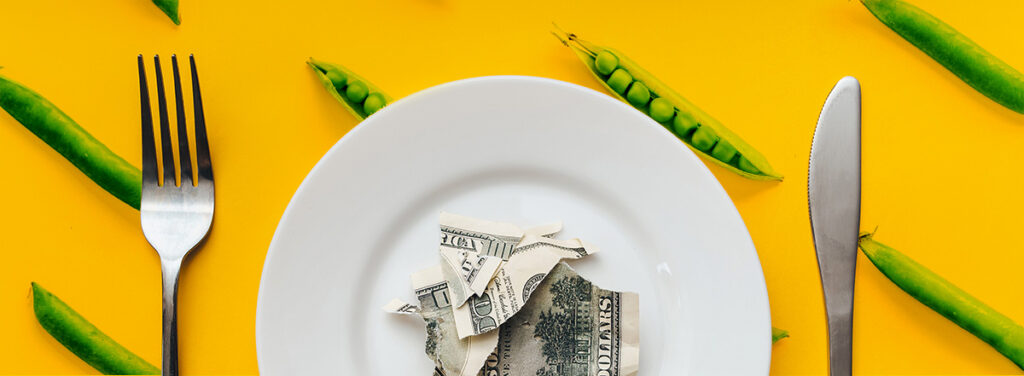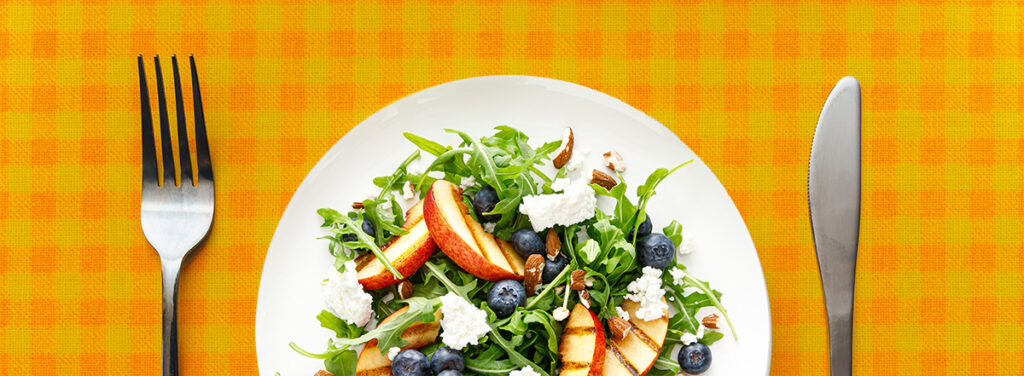
By: Louis Catania, Division of Infectious Disease and medically reviewed by Ann K. Avery, MD, Infectious Disease Physician at MetroHealth Medical Center
Everyone deserves access to food, especially when they’re struggling. 💗 Luckily, help is out there! Let’s take a look at why food insecurity is on the rise, how it affects those living with HIV, and how to find great sources of nutrition near you.
A growing 🌱 problem
Yes, food insecurity is more important now than ever. In 2021, 8.8% of the U.S. said their household didn’t get enough to eat every week. The pandemic had a huge effect on food insecurity, and households today continue to struggle to regularly put food on the table.
Rising poverty, unemployment, lack of affordable housing, and chronic health conditions all make it difficult for families to provide healthy, nutritious food.

Food insecurity heavily affects people living with HIV
25-50% of adults living with HIV experience food insecurity (way more than the rest of the population).
Of that group, it’s especially harmful for women and child-bearing people for a couple of reasons:
- Priorities: In certain households and cultures, and due to sexism in society, women and child-bearing people aren’t always considered equal members of a family. Parental figures can prioritize feeding children and other family members instead of themselves. How many times have you heard of parents going hungry, so their child has something to eat?
- Danger: To access food, these individuals may be forced to put themselves into dangerous situations. They may enter risky sexual relationships, become depressed, develop obesity, or otherwise have their mental and physical health affected beyond the effects of food insecurity.
Why is food insecurity so dangerous for people living with HIV?
A healthy body is key to managing life with HIV. We’re always talking about taking care of your body, mind, and spirit (learn more about that here), and that becomes very difficult if you’re not sure where your next meal is coming from.
This makes sense: When there’s a choice between life-saving food and life-saving medicine, there’s not really a choice, is there? It’s a numbers game, and people can go longer without medicine than food. 😞
The lack of access to nutrition will have a big impact on someone if they have HIV, such as:
- Detectable viral loads
- Lower CD4+ counts
- Malnutrition
- Nutrient deficiencies
- Higher vulnerability to infectious diseases
It also becomes harder to take medication, because some meds must be taken with food to make sure they’re absorbed properly. It’s a negative loop that worsens, the longer it goes on.
The solution? Getting access to free, nutritious food.

Is there free food out there?
Luckily organizations, restaurants, or your local community have recognized that food insecurity is a growing challenge for people. Many are attempting to tackle food waste, or otherwise provide options for nearby residents.
Here are some options for where to find free food and how to get it:
- Local food banks: One of the best ways to find food is to head to your local food bank, which partners with food pantries, soup kitchens, and meal programs in your area. Here’s more information on where to go.
- Supermarket cashback apps: These apps usually have a few freebies or at least some significant discounts.
- Community Supported Agriculture: Weekly subscription to locally grown produce – some programs provide income-based pricing and discounts for people using SNAP (food stamps). One example in Cleveland, OH is City Fresh (Welcome to City Fresh - City Fresh)
- Produce Perks: In Ohio, people who use food stamps to purchase fresh fruits and vegetables at farmers markets can receive FREE extra money (usually in the form of tokens) to spend at those farmers markets each week. Learn more here: Produce Perks Midwest – Spend a little, Save a lot
- Become a mystery diner 🤫: Discover the perks of being a Food Cop, going out to restaurants, and testing the quality of their service or food. You’ll need to report on your findings, but the meal will be free.
- Food waste supermarkets: Ever heard how restaurants throw away a lot of incredible food at the end of the day? Well, food waste supermarkets partner with restaurants to make sure that food is donated instead of being tossed. Just search for a food waste supermarket near you!
- Salvage / Discount / Outlet grocery stores: Places that sell food that’s about to be expired, where the packaging is scratched or dented, etc, can be a big money saver. Where to Buy Salvage Food - List of Salvage Grocers in the US
- Birthday meals 🎂: If it’s your birthday, many restaurants will gift you the meal for free! Here’s a longer list of where you can get birthday freebies - you could have breakfast, lunch, and dinner all taken care of on a day when you should be only worrying about having fun.
- Grow your own 🪴: From small gardens to window boxes, you can put free seed packets to good use (keep an eye on your local garden store). You could even grow a small potato patch from some compost.
This is by no means an exhaustive list. There are jobs that offer free meals (especially in the service industry), or you could take a course on foraging and find your own food in the wild. Supermarkets, cafés, and bars sometimes hand out samples of any new products or meals being launched, so that’s a good option as well for a quick bite.
So, free food is out there. Now the question is: How do you do this healthily?

Eating healthily on a budget
The best advice we can give you is to make a plan.
For some, that means taking one day a week to plan out their meals. 📅 Whatever works for you is the right approach, as long as you’re finding a moment to locate a source of food, make grocery lists for healthy meals, or otherwise secure your nutrition.
Having a strategy in place means you can follow it instead of always trying to come up with a solution on the fly and can be a great way to reduce your stress (which is a big aspect of food insecurity). 😅
Next, think of low-cost alternatives to popular food items that are equally (or even more) healthy. We’re talking replacing meat with beans🫘, legumes, eggs 🥚, or canned fish 🐟. These are cheap and nutritious sources of protein, and you don’t have to replace every meal, just a few times a week.
For a quick checklist, here are the cheapest foods to live on:
- Rice (choose brown over white!)
- Oatmeal
- Bread (choose wheat or multi-grain)
- Pasta
- Bananas
- Beans
- Apples
- Eggs
Some final tips
Did you know highly processed foods 🍔 will cost more and be less nutritious? They’re also usually filled with sodium or sugar. Instead, go for whole foods, like heads of broccoli 🥦 or bags of spinach 🥬.
You can check out your local farmer’s market as well; they’ll be cheaper than grocery stores (and usually friendlier, too 😂). Cook at home when you can; it takes more time, but it saves you money! It helps to stick to generic brands at stores for products — they’re usually the same quality but at a reduced price.
A great way to plan for the week without having to spend much effort is to buy frozen 🧊 fruits and vegetables. These are often picked when they are most ripe and then are immediately frozen, so they will be just as nutritious as their fresh counterparts (as well as being fresh year-round 🥳). Stick these in your freezer and use them to bulk up meals. It’s a great way to add volume and nutrition to any other source of food.
How registering for Positive Peers can help
If you have registered for Positive Peers and are in the app, our resource section offers lists of food pantries in each state.
If you want to stay on top of your health, nutrition, and planning (especially if you’re living with HIV), why not check out the Positive Peers app? People across the U.S. rely on Positive Peers for peer support and to achieve their wellness goals. You’re not alone, and the Positive Peers app is a great way to get the support you deserve. 🤗
